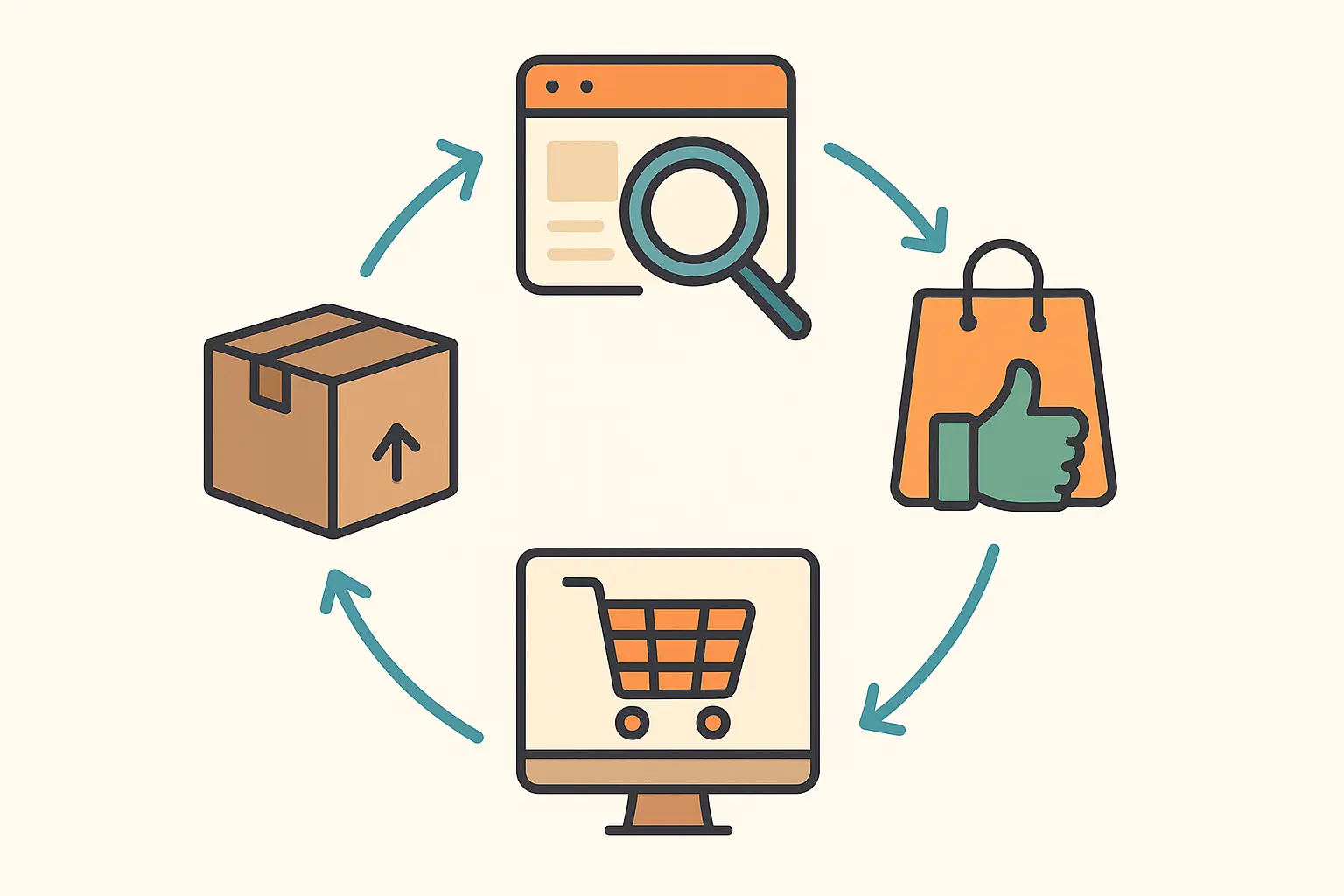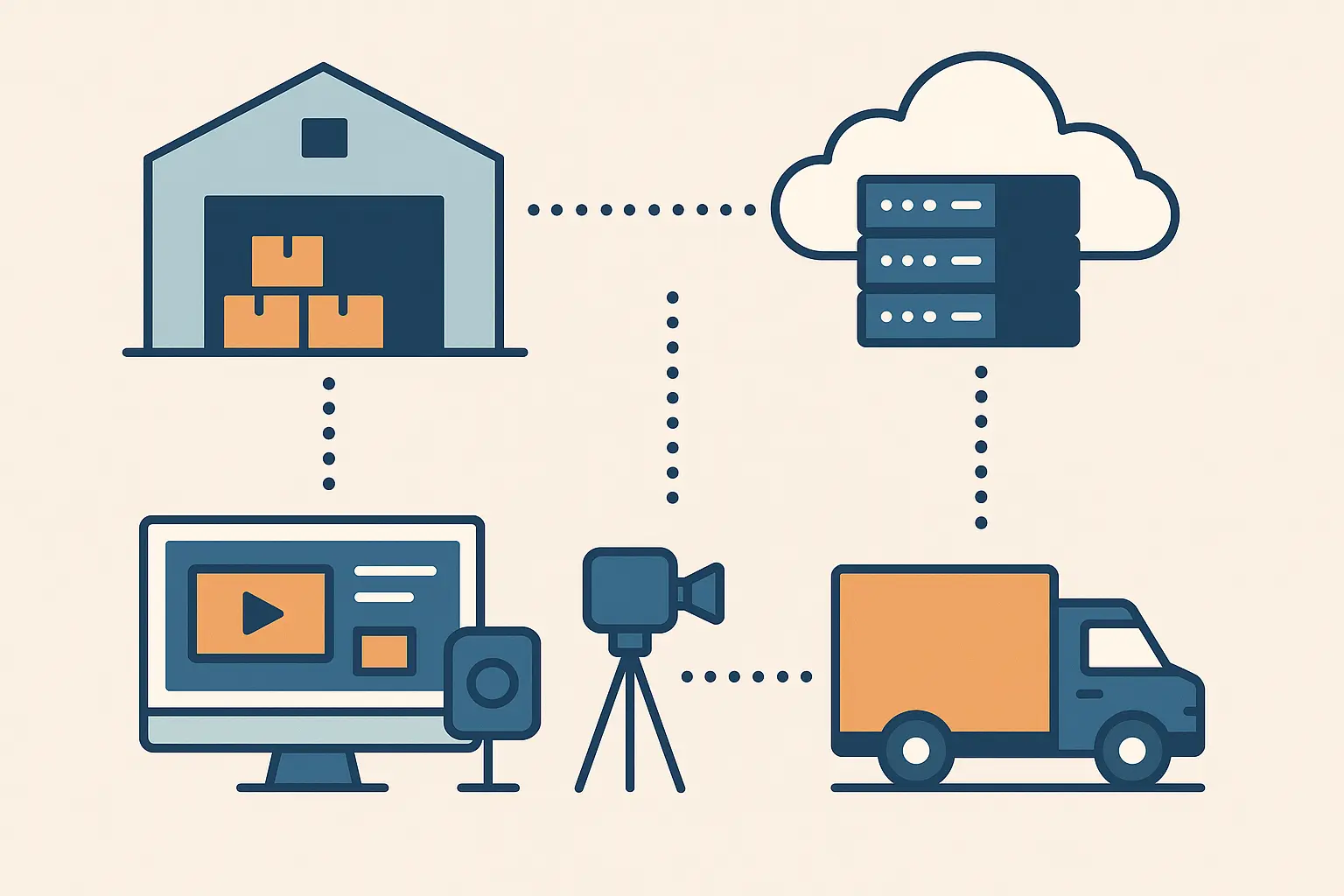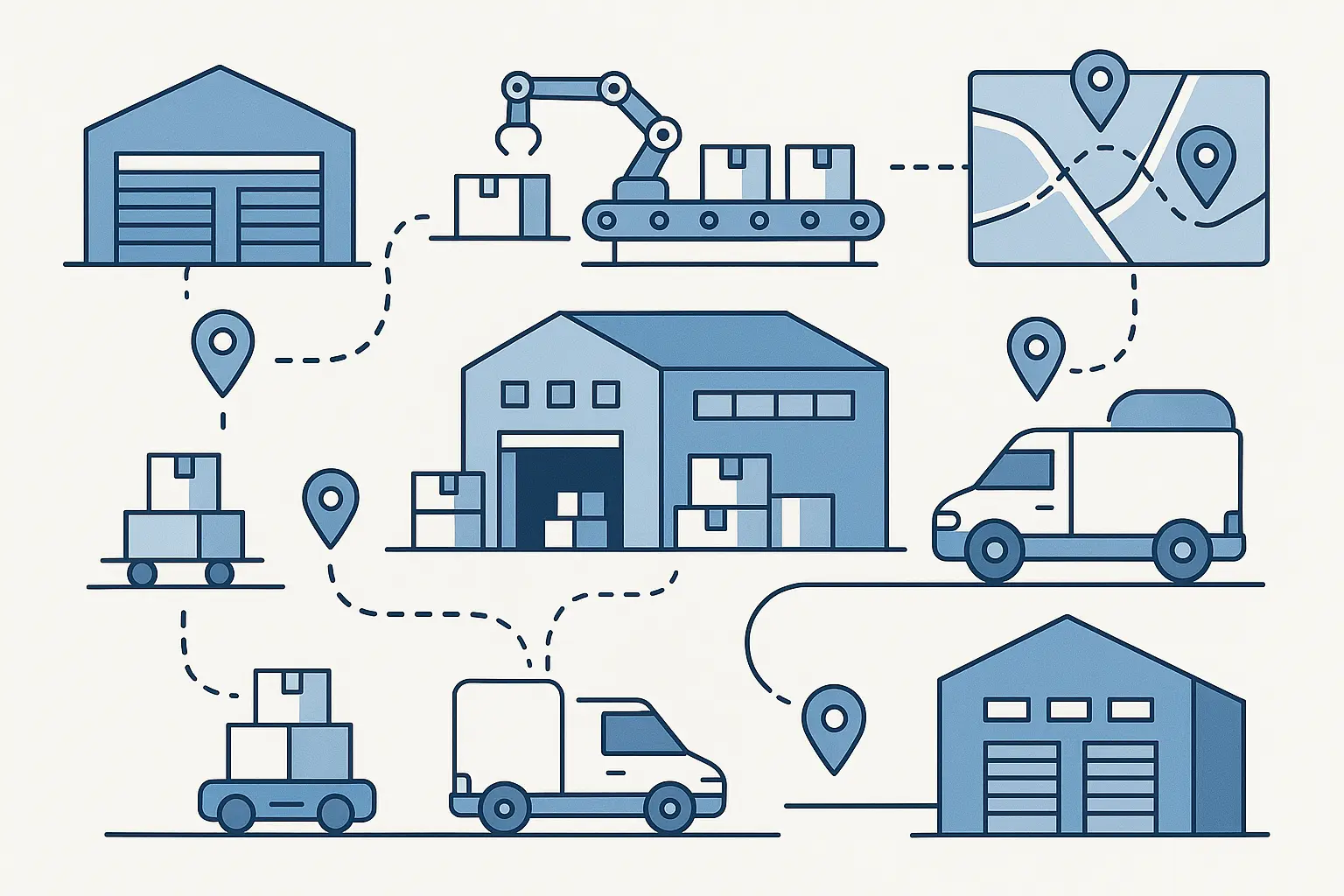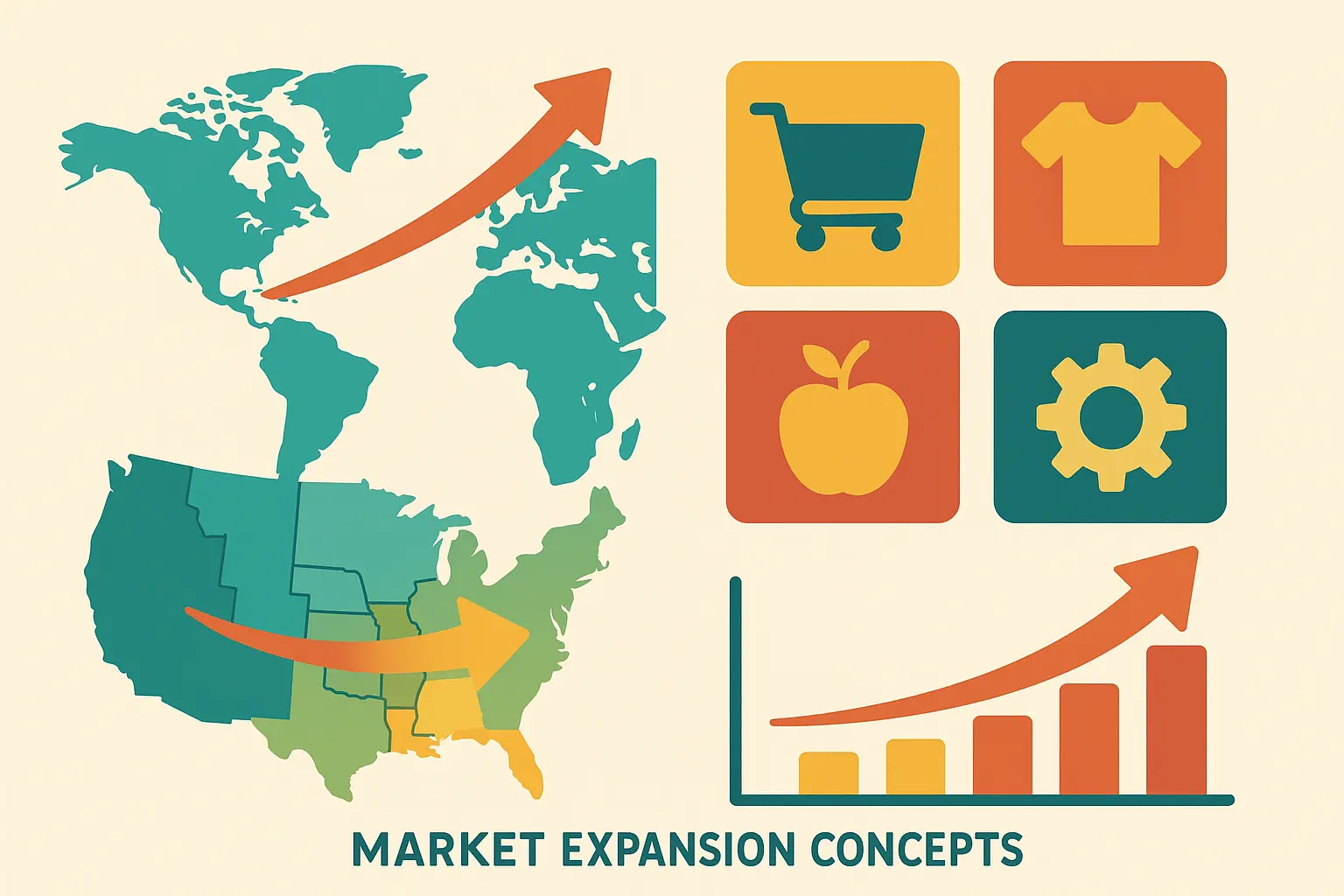Remember when Amazon was just that place where you bought books online? Yeah, those days are long gone. Jeff Bezos started selling books out of his garage, and now Amazon basically runs half the internet. We’re talking about a company that went from making $2.2 billion in 2015 to nearly $23 billion in 2020. That’s not just growth – that’s like watching your neighbor’s lemonade stand turn into Coca-Cola.
Table of Contents
-
The Foundation That Changed Everything
-
Customer-First Philosophy That Actually Works
-
Building Multiple Revenue Streams Without Losing Focus
-
Digital Marketing Mastery Through Data Intelligence
-
Operational Excellence That Competitors Can’t Match
-
Strategic Lessons for Modern Businesses
-
How The Marketing Agency Applies These Insights
TL;DR
-
Amazon’s success comes from actually putting customers first (not just saying they do) and thinking in decades instead of quarters
-
Every click, purchase, and browse gets turned into data that makes their business smarter and more personalized
-
They built a platform where millions of sellers can succeed while Amazon takes a cut from multiple revenue streams
-
Their recommendation system and personalization feels helpful instead of creepy, driving crazy conversion rates
-
They control everything from warehouses to cloud servers to TV shows, creating advantages competitors can’t match
-
Operational excellence through prediction, automation, and scale creates efficiency standards that set industry benchmarks
The Foundation That Changed Everything
Look, I’ve been studying business transformations for years, and Amazon’s journey still blows my mind. This wasn’t some lucky accident where Jeff Bezos stumbled into success. Every single move they made was calculated, and it all came down to one thing that sounds simple but is incredibly hard to execute: they actually put customers first.
I know, I know – every company says they’re “customer-focused.” But Amazon? They literally rebuilt their entire business around this idea. And the numbers don’t lie – their customer satisfaction hit 79% in 2022, even after dropping to 65% during the chaos of 2020. Most companies would’ve panicked, but Amazon just rolled up their sleeves and fixed things.

Customer-First Philosophy That Actually Works
Here’s what’s crazy about Amazon’s customer obsession: they didn’t just slap it on a poster in the break room. They filtered every decision through one simple question: “Will this make things better for our customers?”
Think about it – when was the last time you had to fill out a bunch of forms to buy something online? Amazon killed that with one-click purchasing. Remember waiting weeks for packages? They made same-day delivery normal. Hate dealing with returns? They made it so easy you almost feel guilty.
My buddy who works in retail always complains about how Amazon “ruined” customer expectations. But that’s exactly the point – they raised the bar so high that everyone else is still trying to catch up.
Similar to how businesses use advanced analytics for strategic growth to optimize customer experiences, Amazon leveraged data insights to create their customer-first philosophy that fundamentally changed e-commerce expectations. The one-click thing is a perfect example. While their competitors were making you jump through hoops to check out, Amazon patented a system that literally let you buy stuff with one click. Boom. Done. It sounds obvious now, but back then? Revolutionary.
Long-Term Vision Over Quick Wins
This is where Amazon gets really interesting, and honestly, a little scary for their competition. Most companies are obsessed with quarterly earnings – gotta make those shareholders happy, right? Amazon basically said “screw that” and kept pouring money back into building their empire.
I remember reading about investors getting frustrated because Amazon wasn’t paying dividends. Meanwhile, Bezos was building fulfillment centers and investing in crazy tech projects. Guess who’s laughing now?
This long-term thinking is why they could afford to lose money on Prime for years while building customer loyalty. It’s why they invested billions in AWS before anyone knew what cloud computing really meant. Patient money builds empires.
Amazon’s willingness to sacrifice short-term profitability for long-term market position enabled strategic investments in infrastructure and innovation that created insurmountable competitive advantages. This Amazon case study demonstrates how patient capital allocation can build sustainable business moats.
Amazon’s Long-Term Playbook:
-
Put customer lifetime value above quick profits
-
Reinvest everything into getting better
-
Build stuff that’s hard for competitors to copy
-
Think in decades, not quarters
-
Create systems that get stronger over time
-
Scale until nobody can compete
Data Powers Every Decision
Here’s where Amazon gets a little creepy (but also brilliant). Every time you browse, click, or buy something, they’re learning. Not in a “Big Brother is watching” way, but more like “helpful friend who remembers everything.”
They don’t guess what might work – they know. Your browsing history tells them what you might buy next. Your purchase patterns help them stock the right stuff in warehouses near you. Even how long you spend looking at a product page feeds into their algorithms.
It’s like having a personal shopping assistant who never forgets anything and gets smarter every day. Kind of amazing, kind of terrifying.
Just as companies today leverage AI-powered continuously learning systems to optimize their operations, Amazon pioneered the use of machine learning algorithms to transform raw customer data into actionable business intelligence. When Andy Jassy took over as the President and CEO of Amazon on July 05 2021, it made perfect sense. The guy who built AWS was now running the whole show, bringing that same data-driven mindset to everything Amazon does.
Obsessive Focus on Customer Experience
Amazon doesn’t just react to what customers want – they figure out what you need before you do. Subscribe & Save predicts when you’ll run out of dog food. Their recommendation engine introduces you to books you didn’t know you wanted to read.
Once you get used to this level of convenience, shopping anywhere else feels like going back to the stone age. That’s not an accident – it’s strategy. They’ve made switching to a competitor feel like punishment.

Building Multiple Revenue Streams Without Losing Focus
What’s brilliant about Amazon’s expansion is how everything connects. They didn’t just randomly start selling cloud storage or making TV shows. Each new business line uses what they already built, making the whole thing stronger.
Understanding revenue optimization is crucial for modern businesses, which is why tools like our Amazon revenue calculator help entrepreneurs analyze the financial mechanics that drive successful marketplace strategies similar to Amazon’s approach.
|
What They Do |
How It Works |
Why It’s Smart |
|---|---|---|
|
Online Store |
Sell stuff directly and take cuts from other sellers |
Massive customer base gives them data gold |
|
AWS |
Rent out computing power |
High margins, recurring money |
|
Prime |
Membership with perks |
Keeps customers hooked, predictable income |
|
Advertising |
Sponsored products and brand ads |
Uses existing traffic, pure profit |
|
Logistics |
Handle shipping for others |
Makes money from infrastructure they already built |
Platform Evolution Strategy
Amazon pulled off something really clever here. Instead of trying to sell everything themselves, they created a mall where millions of other sellers could set up shop. Genius move.
Think about it – they get inventory without buying inventory. Other people take the risk on what products to stock, Amazon just provides the storefront and takes a cut. Plus, they learn from what sells well and can always create their own version later (hello, Amazon Basics).
The marketplace model is like being a landlord, payment processor, and marketing agency all rolled into one. Every transaction generates multiple revenue streams – seller fees, advertising money, fulfillment charges, and payment processing. It’s beautiful, really.
When you look at their final quarter of 2022 numbers – over $149.2 billion in sales – you realize just how massive this platform approach has become. This case study of amazon shows how platform business models can create exponential growth opportunities.
Vertical Integration Advantages
Amazon decided early on that if you want something done right, do it yourself. Instead of relying on other companies for shipping, cloud storage, or content, they built their own versions – and then made them better than everyone else’s.
AWS started because Amazon needed better servers for their own website. But instead of keeping that technology to themselves, they turned it into a business that now powers half the internet. Netflix, Airbnb, even government agencies run on Amazon’s cloud. Talk about ironic – Amazon profits when their competitors succeed.
Same thing with content creation. Instead of just licensing shows and movies, they started making their own through Amazon Studios. Now Prime Video is another reason people stay subscribed, and they control the costs instead of getting squeezed by content providers.

Digital Marketing Mastery Through Data Intelligence
Amazon’s approach to marketing feels less like advertising and more like mind reading. They’ve figured out how to make their marketing so relevant that it actually helps instead of annoys.
Modern businesses can apply similar principles by calculating and optimizing their marketing ROI to ensure data-driven decision making mirrors Amazon’s systematic approach to customer acquisition and retention strategies.
Personalization That Actually Converts
You know that “customers who bought this also bought” section? That’s not just a nice feature – it’s a conversion machine that can boost sales by 10-30%. Amazon analyzes millions of purchase patterns to predict what you might want based on what similar customers bought.
The scary part is how good they’ve gotten at this. Their recommendation system doesn’t just suggest random stuff – it introduces you to products you genuinely end up loving. It’s like having a friend with perfect taste who knows exactly what you need.
They also adjust prices in real-time based on demand, competition, and how much inventory they have. While you’re deciding whether to buy something, algorithms are calculating the perfect price point to maximize both sales and profit. This Amazon case study shows how machine learning algorithms can analyze customer behavior patterns and predict preferences, creating individualized shopping experiences that increase conversion rates through relevant product recommendations and optimized pricing strategies.
How to Build Your Own Personalization System:
-
Start Collecting Data
-
Track what people do on your site
-
Save purchase history and preferences
-
Monitor search patterns and browsing behavior
-
-
Find the Patterns
-
Use tools to identify customer segments
-
Look for behavior patterns that predict purchases
-
Build models that can guess what people want
-
-
Make It Personal
-
Customize your homepage for each visitor
-
Send targeted emails based on behavior
-
Show relevant products and offers
-
-
Keep Improving
-
Test different approaches constantly
-
Track what actually increases sales
-
Refine your system based on results
-
Search Dominance Strategy
Here’s something wild: Amazon has become the Google of shopping. When people want to buy something, they often skip Google entirely and go straight to Amazon to search. That’s a massive shift in behavior, and it’s incredibly valuable.
Why? Because when someone searches on Amazon, they’re already ready to buy. Google might show you information about products, but Amazon shows you products you can purchase right now. That’s why brands pay premium prices to advertise on Amazon – the intent to purchase is already there.
Getting your products to show up in Amazon search results requires understanding their A9 algorithm, which is different from Google’s. It cares more about conversion rates and seller performance than traditional SEO factors.
Forbes gives a consensus recommendation to buy Amazon stock partly because of how effective their advertising platform has become, with a return on assets (TTM) of 1.73%, reflecting the strong performance driven by their integrated marketing and platform strategies.
Voice Search Integration
Alexa changed the game by making shopping conversational. Instead of browsing websites, you can just say “Alexa, reorder my usual coffee” and boom – it’s done. No clicking, no typing, no thinking required.
This voice-first approach gives Amazon insights into customer behavior that other companies can’t get. When you talk to Alexa, you’re basically telling Amazon exactly what you want, when you want it, and how you think about products.
The data from these voice interactions feeds back into everything else Amazon does – their recommendations, inventory planning, even product development. It’s all connected.

Advertising Revenue Growth
Amazon’s advertising platform is brilliant because it doesn’t feel like advertising. Sponsored products show up in search results and on product pages, but they look native to the shopping experience. You’re not being interrupted by ads – you’re being shown relevant products you might actually want.
The closed-loop system means advertisers can track everything from the first ad impression to the final purchase. That level of accountability is rare in advertising, and it’s why brands keep increasing their Amazon ad spend.
|
Ad Type |
Where It Shows Up |
Who Sees It |
Why It Works |
|---|---|---|---|
|
Sponsored Products |
Search results and product pages |
People actively shopping |
Catches high-intent customers |
|
Headline Search Ads |
Top of search results |
Category browsers |
Builds brand awareness |
|
Product Display Ads |
Product detail pages |
Similar product viewers |
Cross-sells related items |
|
Video Ads |
Product pages and mobile app |
Engaged shoppers |
Rich storytelling format |
|
Amazon DSP |
External websites and apps |
Broader audience |
Full-funnel marketing reach |
Operational Excellence That Competitors Can’t Match
Amazon’s behind-the-scenes operations are where the real magic happens. This stuff isn’t glamorous, but it’s what makes same-day delivery and competitive pricing possible at massive scale.

Supply Chain Innovation
Amazon’s fulfillment network is like a crystal ball that can predict what you’ll want before you know you want it. Their algorithms analyze buying patterns to position products in warehouses closest to likely customers. Your order might ship from a facility 20 miles away because their system predicted someone in your area would want that exact item.
The warehouse automation is straight out of a sci-fi movie. Robots zip around moving inventory while humans handle the more complex tasks. This isn’t just about cutting labor costs – it’s about speed and accuracy that human-only operations can’t match.
When Amazon’s marketing strategy helped the company achieve a 1.7 trillion-dollar valuation in 2021, a huge chunk of that value came from their operational capabilities. Investors weren’t just buying an online store – they were buying the most sophisticated logistics network in the world.
Technology Infrastructure Excellence
AWS is probably Amazon’s most brilliant accidental business. They built incredible computing infrastructure to handle their own website traffic, then realized other companies would pay big money to use it too.
Now AWS powers major competitors like Netflix and Airbnb. Amazon literally profits from their competitors’ success while maintaining advantages through superior understanding of cloud infrastructure. It’s like selling weapons to both sides of a war while keeping the best ones for yourself.
The margins on AWS are way better than retail, which is why it’s become such a huge part of Amazon’s overall profitability. Cloud services generate recurring revenue with much higher profit margins than selling physical products. Amazon’s AWS infrastructure powers major competitors like Netflix, Airbnb, and even government agencies. This creates the unique situation where Amazon profits from competitors’ success while maintaining operational advantages through superior understanding of cloud infrastructure capabilities and costs.

Strategic Lessons for Modern Businesses
Amazon’s playbook isn’t just for tech giants. The principles they use can work for businesses of any size, though obviously at different scales.
Data-Driven Strategy Implementation
Amazon proves that making decisions based on data instead of gut feelings or industry trends creates real competitive advantages. Every part of their business runs on metrics and analysis rather than assumptions.
They track performance across every customer touchpoint to optimize marketing spend and improve conversion rates. This systematic approach eliminates waste and maximizes return on investment.
Their predictive analytics don’t just look at what happened – they forecast what’s coming next. This forward-thinking approach lets them allocate resources better and manage risks before they become problems.
Your Data-Driven Action Plan:
-
Set clear metrics for everything you do
-
Track customer behavior across all touchpoints
-
Test everything before making big changes
-
Build models to predict demand and trends
-
Create dashboards to monitor performance in real-time
-
Regularly audit and improve your measurement systems
-
Train your team to interpret and use data
-
Automate routine decisions based on data
Customer Retention Excellence
Amazon Prime is a masterclass in keeping customers hooked. The membership program increases how much customers spend while making it painful to switch to competitors through bundled services and exclusive benefits.
Programs like Subscribe & Save create recurring revenue while automating customer needs. This approach reduces churn while increasing purchase frequency without feeling pushy or aggressive.
Their cross-selling and upselling feels helpful rather than salesy because it’s based on actual purchase history and browsing behavior. They’re not randomly suggesting products – they’re introducing you to stuff you’re likely to actually want.

Competitive Strategy and Market Disruption
Amazon doesn’t just compete – they systematically dismantle entire industries through operational excellence and customer obsession.
Market Entry and Expansion Tactics
Amazon doesn’t randomly enter new markets. They use data from existing customers to identify opportunities with the highest chance of success. Each expansion builds on what they already do well while serving current customers better.
When they expand geographically, they adapt to local conditions without compromising their core standards. They study regulations, logistics challenges, and cultural preferences before committing resources.
Category expansion follows customer behavior patterns. When data shows customers searching for products Amazon doesn’t sell, those signals inform decisions about new categories and potential acquisitions.
Geographic Expansion Strategy
International expansion requires balancing global efficiency with local adaptation. Amazon maintains their core customer experience while adjusting for local preferences and regulations.
Each new market requires massive upfront investment in fulfillment infrastructure and local partnerships. This patient approach prioritizes long-term market position over quick revenue.
Local competitors often underestimate Amazon’s willingness to lose money during market entry. This long-term commitment creates sustainable advantages once they achieve operational scale.
Category Expansion Methodology
New product categories get tested through customer analysis and small pilots before major investments. Amazon uses existing customer relationships to validate demand before full launches.
Private label development follows successful third-party seller patterns. Amazon identifies high-volume, profitable categories and develops competing products using superior data and operational capabilities.
Strategic acquisitions target successful companies in adjacent markets that serve Amazon’s existing customers. These purchases accelerate expansion while eliminating competitive threats.

Competitive Response and Defense
When competitors challenge Amazon, they respond through operational improvements rather than just price wars. They invest in better customer experience and operational efficiency.
Price leadership comes from operational advantages rather than unsustainable discounting. Amazon’s scale and efficiency enable competitive pricing while maintaining healthy margins.
Continuous innovation serves as a competitive moat that’s difficult to replicate. Ongoing investment in R&D and emerging technologies creates advantages that compound over time.
Strategic Acquisitions and Partnerships
Amazon’s acquisition strategy focuses on companies that complement existing capabilities or eliminate competitive threats. Purchases like Whole Foods and Ring expanded their physical presence and smart home ecosystem.
Partnership agreements often precede acquisitions. Amazon tests compatibility through business relationships before making purchase offers, reducing integration risks.
Technology acquisitions target companies with capabilities that enhance core operations. AI, logistics, and cloud computing companies are particularly attractive targets.
Marketplace and Third-Party Seller Strategy
Amazon’s marketplace transformation created a win-win ecosystem where millions of sellers reach customers while Amazon captures value through multiple revenue streams.
The seller onboarding process balances accessibility with quality control. Amazon provides tools and support that help sellers succeed while maintaining standards that protect customer experience.
Commission and fee structures encourage seller participation while generating substantial platform revenue. Amazon earns from listing fees, fulfillment services, advertising spend, and payment processing – creating multiple touchpoints for monetization from each seller relationship.

How The Marketing Agency Applies These Insights
At The Marketing Agency, we use Amazon’s proven strategies to help clients achieve measurable growth through data-driven marketing approaches. Our methodology mirrors Amazon’s commitment to evidence-based decisions rather than assumptions or following the latest trends.
Like Amazon’s focus on long-term customer value over short-term profits, we build sustainable competitive advantages through SEO, content marketing, and customer experience optimization. This creates lasting results rather than temporary traffic spikes that disappear when you stop paying for ads.
Our AI-driven analytics and predictive modeling help clients understand customer behavior patterns and optimize marketing spend. We apply Amazon’s personalization principles through targeted campaigns that feel helpful rather than intrusive.
Similar to Amazon’s comprehensive approach to business optimization, we help clients implement SEO ROI calculators to measure and improve their digital marketing performance using data-driven methodologies that mirror Amazon’s systematic approach to growth.
Ready to apply Amazon’s proven strategies to your business? Our team specializes in translating these insights into actionable marketing campaigns that drive real growth. Let’s talk about building your own customer-centric marketing system that actually works.
Final Thoughts
Amazon’s journey from online bookstore to global powerhouse wasn’t luck – it was systematic execution of customer-focused principles, data-driven decisions, and long-term thinking. Their success shows that sustainable competitive advantages come from operational excellence and customer obsession, not short-term tactics or hoping for viral moments.
These lessons work across industries and business models. Whether you’re building an e-commerce platform, developing software, or providing services, the core principles remain: understand your customers deeply, make decisions based on evidence rather than gut feelings, and build systems that improve over time.
What makes Amazon’s approach valuable is its scalability. The same principles that work for a global conglomerate can be applied to small businesses and marketing agencies. The key is starting with solid foundations – understanding your customers, measuring what actually matters, and building systems that create value for everyone involved.
The most important takeaway? Stop trying to copy what Amazon does and start applying how they think. Customer obsession, long-term vision, and data-driven decision making aren’t just big company strategies – they’re the foundation of any business that wants to build something lasting.



